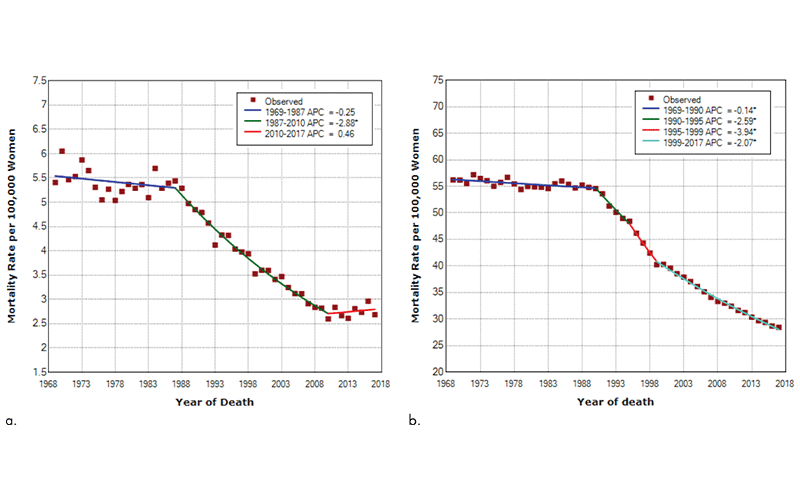Breast Cancer Death Rates Stop Declining in Younger Women
Researchers hope findings raise awareness of breast cancer in younger women and spur research

Breast cancer death rates have stopped declining for women in the U.S. younger than age 40, ending a trend that existed from 1987 to 2010, according to a new study in Radiology.
Breast cancer is the most common non-skin cancer and the second most common cause of cancer deaths in women in the U.S., accounting for 30% of all cancers in women. Although most invasive breast cancers occur in women age 40 years and older, 4% to 5% of cases happen in women younger than 40 years.
Statistics have shown steady decline in overall breast cancer mortality rates for American women since 1989. From 1989 to 2017, breast cancer mortality rates for all women in the U.S. decreased by 40%, a decrease attributed to improved treatment and increased rates of screening mammography use starting in the early to mid-1980s.
Changing Mortality Rate Likely Related to Increase in Distant-Stage Breast Cancers
In the new study, researchers determined U.S. trends in female breast cancer mortality rates by 10-year age subgroups based on recent data from the National Center for Health Statistics.
Analysis showed that from 2010 to 2017, mortality rates decreased between 1.2% and 2.2% per year for women in each age decade from 40 to 79 years but increased by a non-significant 0.5% per year for women 20 to 39 years of age.
“It’s clear that mortality rates in women under 40 are no longer decreasing,” said study lead author R. Edward Hendrick, PhD, clinical professor from the Department of Radiology at the University of Colorado School of Medicine, Aurora, CO. “I estimate that in two to three years, the mortality rate will be increasing significantly in these women.”
The changing mortality rate in younger women is likely related to an increase in distant-stage, or metastatic, breast cancers. The authors’ analysis of invasive breast cancer incidence rates from the Surveillance, Epidemiology, and End Results program found that distant-stage breast cancer incidence rates have increased by over 4% per year since the year 2000 in women ages 20 to 39 years, a much higher rate of increase than in women ages 40 and over.
Unlike breast cancer treatments, imaging recommendations for early detection vary by age. Women 40 and older are offered screening mammography for early breast cancer detection and over half of these women report being screened regularly. Screening is not done for women under 40 unless they are known to be at high risk for breast cancer.
According to the researchers, the continued decline in death rates in women over age 40 may reflect the benefit of regular screening for women in this age group. The difference in mortality trends for women under 40 and over 40 provides further evidence for the essential role mammography screening plays in decreasing breast cancer deaths, they said.
The researchers plan to continue studying these trends to learn more about why mortality rates have stopped declining in younger women.
“Our hope is that these findings focus more attention and research on breast cancer in younger women and what is behind this rapid increase in late-stage cancers,” Dr. Hendrick said.
For More Information
Access the Radiology study, “Breast Cancer Mortality Rates Have Stopped Declining in U.S. Women Younger than 40 Years.”
Read previous RSNA News articles on breast cancer:
